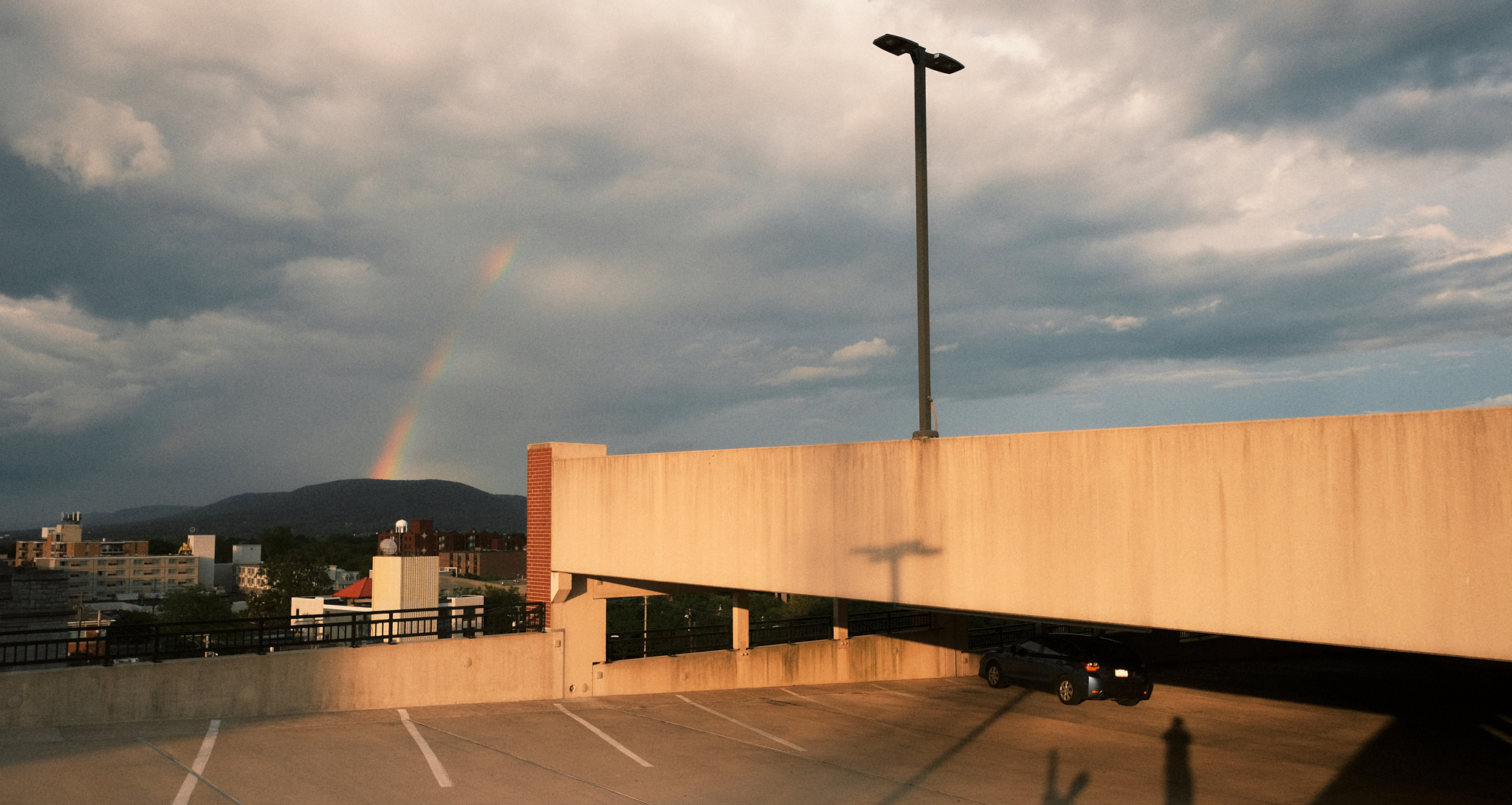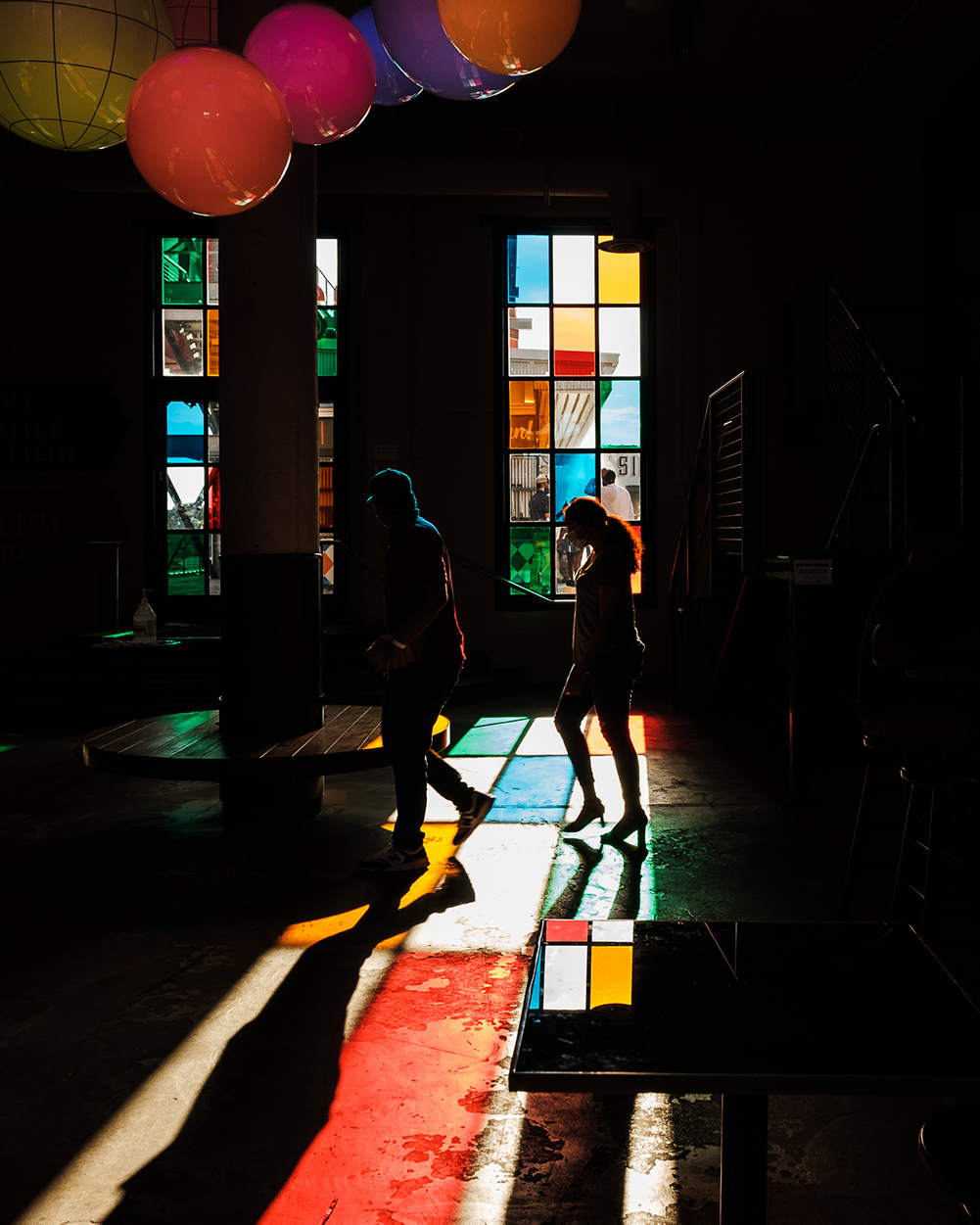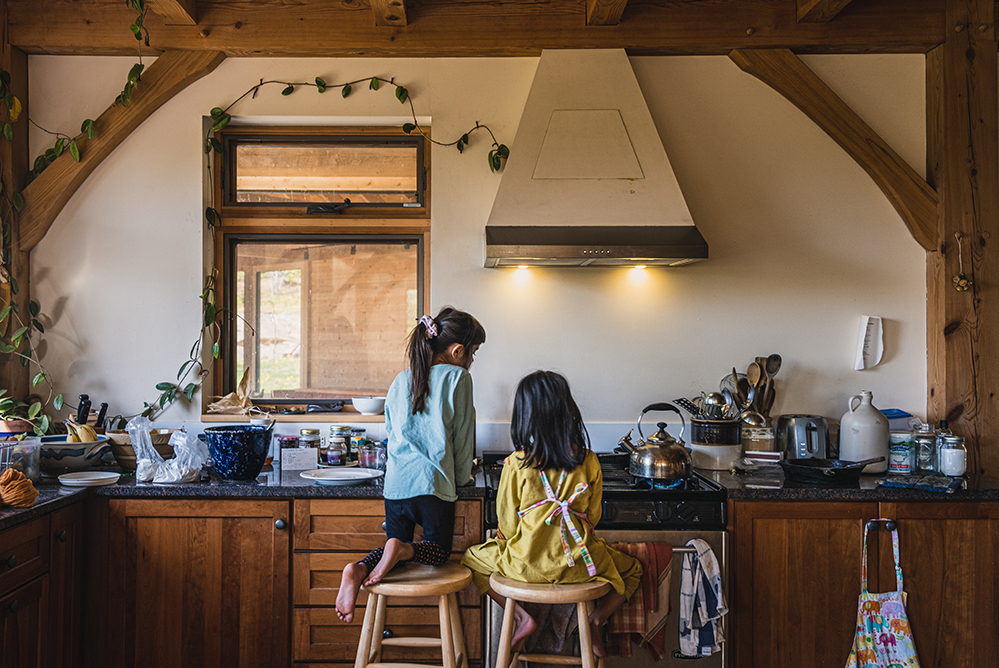 Students of Storytelling
Students of Storytelling 
This self-described student, entrepreneur and explorer was born in Shanghai, China, and raised there as well as on two other continents. His upbringing has instilled a deep desire to be a connector between cultures, which in turn has taken him across the world, from volunteering on organic farms in New Zealand to visiting families in Palestinian refugee camps. Currently, Ben is on a journey to see the world through a new lens with, he says, the help of Fujifilm. Ben won the Fujifilm Students of Storytelling competition for how he sees the world “through a new lens” while on this journey to create compelling and unique work. Fujifilm created the contest to identify the next generation of U.S. storytellers, and to provide them with Fujifilm X Series or GFX System gear to bring their vision to life.
Rangefinder: What interests you as a storyteller? Which stories are you drawn to?
Ben Yan: Having grown up in multiple cultures, I’m naturally drawn to stories that connect. Specifically, stories of the seemingly unlikely occurrences that go on to shape someone’s life. For instance, if it were not for my mother moving me with her to the United States when I was nine years old, I would likely be explaining myself in a different language right now. Or I might not even be a photographer! Learning about others’ experiences is a fast track for me to learn more about who they are, and at the same time who I am in relation to the world.
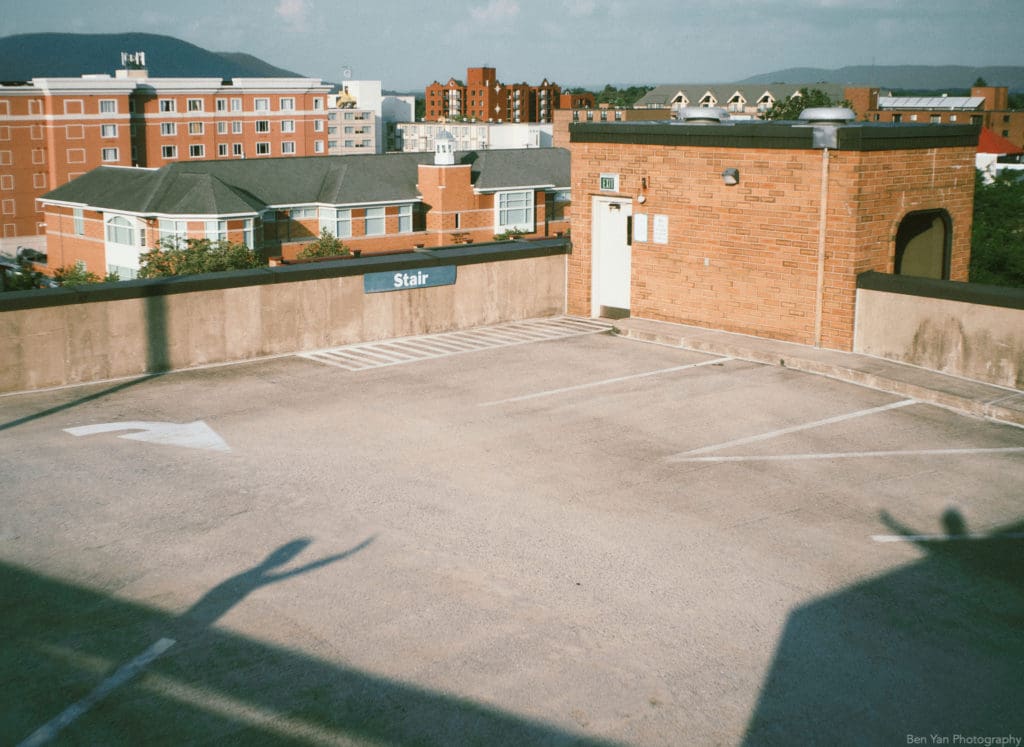
All Images © Ben Yan
Rf: What stories do you want to share through your work?
BY: Unlike the lasting stories that I enjoy consuming, my work in photography focuses on the fleeting moments of everyday life that often get passed by without much notice. In today’s fast paced world, where we find ourselves in constant states of multitasking, it can be very difficult to stay in the present. My work aims to be a gentle nudge for the viewers to take pauses in their routines, to truly take in the world around them and see the opportunities for the beauty they contain.
Rf: Describe the evolution of your style and approach. How has it changed over time, and why?
BY: When I started photography, I was drawn to subject matter and looking for interesting characters as I walked down the street with my camera. I worked quickly, with the camera on aperture-priority, shooting as many shots as I could. This past year, I studied in the Netherlands where I shot mostly 35mm and 120mm film. The cost per shot of film forced me and my college- student-budget to slow down and consider every shot before clicking the shutter. This really helped ensure that every frame was “perfect,” and showed me a new way of looking at the world. Most of my work transitioned to still life and working available light. Now, back in the U.S. where I don’t have a lab in close access, I am back to shooting digital, though the process of shooting film left a powerful impression on me. Now, my work is a hybrid of my previous two ways of shooting.
Rf: What (and who) has influenced your work, and how?
BY: Studying the work of other photographers has been incredibly inspirational. I’ve dipped into a wide variety of genres—from the amazing outdoors captured by French photographer Strohl, to curated nostalgic scenes by Tania Franco Klein, the vintage work of Magnum photographers, to modern day street photographers like Josh Edgoose and Alan Schaller. Each time, I take something away from every one of them. By looking at their work, I’m getting a peek into how they see the world, which in turn broadens my own perspective when walking the streets.
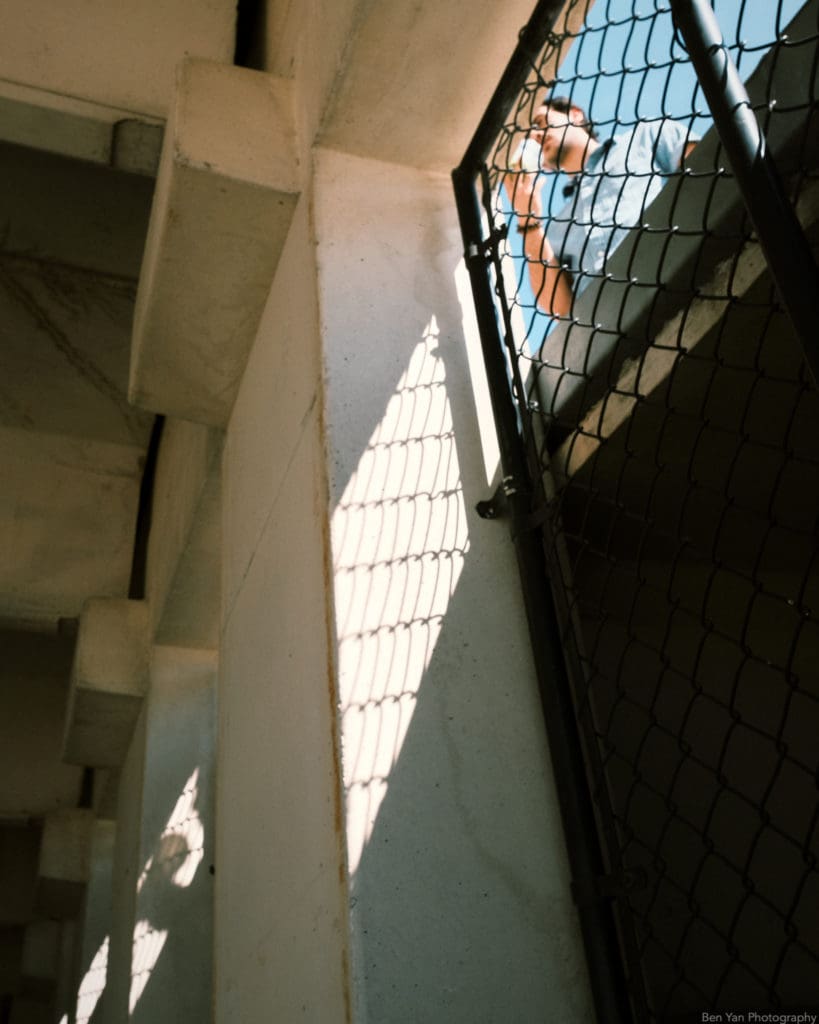
Fujifilm X-Pro 3 with a 16mm f2.8 lens
Rf: What are the key things you have learned or done that have helped you advance your career since you began shooting?
BY: When I worked as an event photographer for The European Fine Art Fair (TEFAF), it was mentally motivating and also the first time that someone other than my friends enjoyed my work enough to hire me. It felt like a stamp of approval that the work I was doing was actually valuable. It was also physically challenging—eight hours of non-stop shooting and fast turnaround times pushed my stamina. I was doing what I loved, and I look back on that experience very fondly.
Rf: What is the most helpful piece of advice you’ve received and followed?
BY: It was when Miles Witt Boyer told me, “This is all about you.” I was introduced to Miles thanks to the Fujifilm Students of Storytelling project, and he is my first true mentor within photography. He reminds me that in this journey of photography, I should focus on myself, what interests me, and how I can develop as a photographer. This has been tremendously helpful for staying motivated, and making creative decisions more clearly.
Rf: How has photographic education affected your career and development as a photographer?
BY: I’ve never had any formal photography education. There have been a lot of YouTube videos and online workshops, but to be honest, the source of most of my growth has been picking up the camera and going outside.
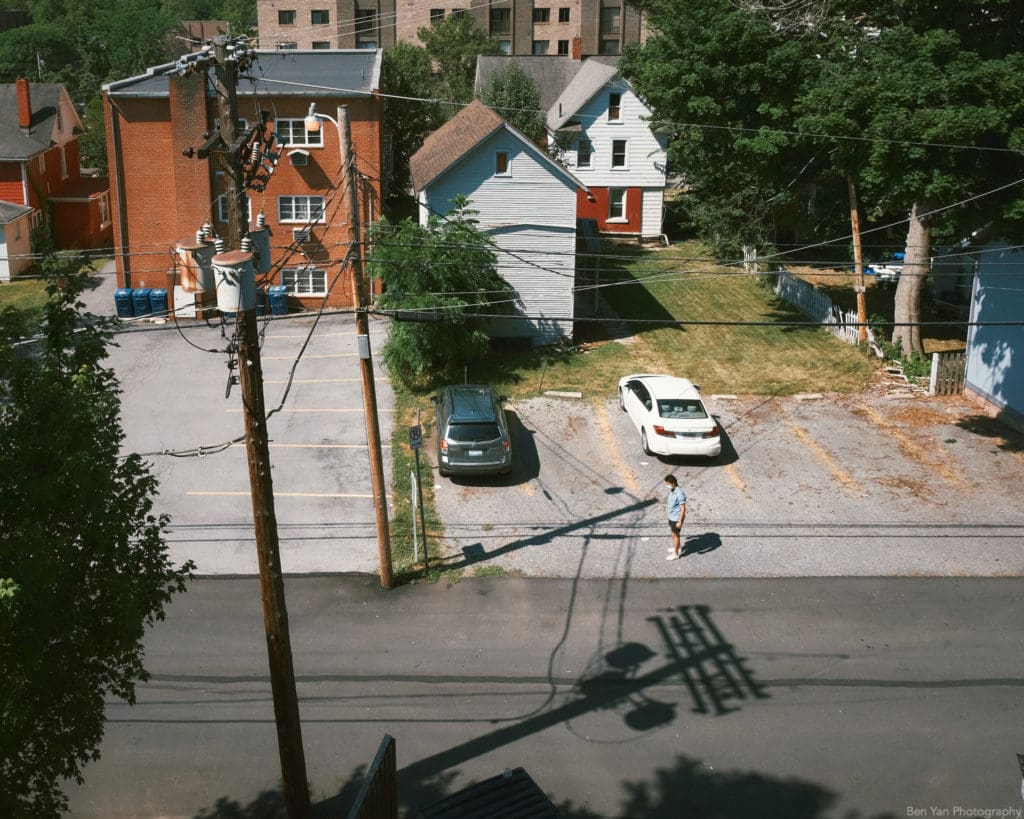
Fujifilm X-Pro 3 with 16mm f2.8 lens
Rf: You recently shared the following on Instagram: “Whereas my usual body of work consists of whatever the world throws at
me, the only limit I have now is my own imagination for what the image could be. I’ve come to realize that both are equally useful, and mutually beneficial.” What is your approach to curating a spontaneous moment and what have you learned?
BY: Thanks for doing your homework! The goal for these images is to create moments that appear authentic. My experience on the street observing human behavior has been incredibly helpful. I have a vision in my head for what I’d like the image to look like before ever raising the camera to frame the shot. Once my eye is looking through the viewfinder, I’m usually only making minor adjustments to match what I see with what I imagined. The unforeseen challenge of this project was when it came to directing my model. Having never worked with models before, I stumbled a lot with my communication. With practice, I’m improving a lot in my word choice and direction to get the results that I’m looking for, and also provide a fun experience for the model.
Rf: How did you come up with the project you decided to submit for Fujifilm’s Students of Storytelling program?
BY: My original submission proposed a project that would have produced similar work to what I had already been making—still lifes of ordinary objects, accented by combinations of color, contrasting light, and/or spontaneous coincidences. However, after learning from workshops provided by Varina and Leah @Muse Storytelling, and brainstorming with Miles, my project evolved into a reflective journey where I invite others into my process of creating images. In my previous works, I’ve always been alone and in the moment; street photography was a form of meditation. By bringing someone into this intimate mental space, a metaphorical barrier is broken. This project will be a documentary of this experiment, so to speak.
Rf: What works have you produced with your new Fujifilm systems?
BY: I’ve been shooting with Fujifilm ever since I started getting mentally (and financially) invested in photography. With the new X-Pro3, I’ve created several curated environmental portraits, using my friends as the “anonymous stranger” in the images.

Fujifilm X-Pro 3 with a 23mm f2.0 lens
Rf: Where do you see your work going from here?
BY: Through this project, I have a newfound love with portraiture. I hope to spend more time learning about lighting, posing and everything portrait. There will definitely be more human-centered work coming in the future, most likely still with a street-inspired twist.
Rf: Which brand, media outlet or agency is your ideal client?
BY: Photography in my life has been a source of great joy and connection. I’d like that to continue in my future professional work. Photography will likely not be my main source of income, meaning I will never do a shoot just for the paycheck. With that said, I’m interested in work that allows me to weave my street photography passion into the images I create for the client. The travel industry is one that would be a particularly good fit, as the work involves human elements, but also places emphasis on location and atmosphere. As an avid traveler myself, magazine publications like The Lonely Planet and Nat Geo Travel, as well as promotional material for airlines and transportation services companies would be ideal clients.
Visit the official Fujifilm Students of Storytelling site for more information about the complete program. Follow @benonthestreet to stay up to date with Ben Yan.

